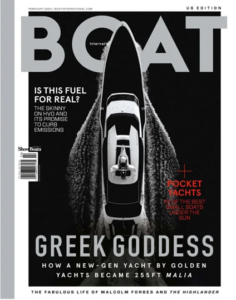No, that is not a misspelling of amusement. This is what SeaWorld became known as resulting from a string of documented abuses of killer whales coupled with trainer deaths in their parks. The recent release of the movie Blackfish on Amazon Prime caused me to finally watch this documentary and to write this blog. The news around this is now ancient.
However, the story is relevant today on so many levels. When you see the Rotten series on Netflix (https://www.netflix.com/title/80146284) or Seaspiracy (https://www.seaspiracy.org/) or the other documentaries detailing animal with abuse in our food chain, you come away with a sickening feeling that corporate America is totally corrupt.
The talking points and counter arguments sound like the ones we heard as the tobacco industry struggled to persist and keep their business base as the dangers of smoking were continually exposed.
In like manner, as you watch Blackfish you see SeaWorld lying and twisting anything they could concoct into the justification to continue their killer whale performances. It took about a decade, but the end is now clear. They will be stopping orca performances and interactions completely as the stock of their animals eventually disappears.
I did not coin the term abusement parks. Here is the article that describes the situation:
https://theconversation.com/blackfish-how-captive-killer-whale-documentary-ended-seaworlds-orca-breeding-programme-161775
How does this relate to today and my audience for Captain Obvious? EVs are today’s blood diamonds. The facts are all there in plain sight … but the impacts are in countries where child abuse and human trafficking are so common they are just part of the system.
Watch the Rotten episode on chocolate, read the articles about avocados in Mexico, or see how China is raping our seas in Seaspiracy. The pattern is the same. What seemingly is a noble mission to feed the world is exploiting it at rates that are unsustainable and causing human suffering on a scale that would normally be defined as international war crimes.
As I consider these common illustrations of what we might call failings of being human, I am increasingly brought to the conclusion that we are not nearly as smart as these animals we are abusing. We are not the pinnacle of God’s creation. We are abusive at levels not seen in any other animal species, perhaps except for our closest genetic cousin, the chimpanzee.
Newt Gingrich was right to insist that all new members of Congress had to read Frans de Waal’s book Chimpanzee Politics. Sadly, we are about to lose Frans to cancer and will not be blessed with any more of his wonderful books on our primate relatives.
Thanks so much Frans for your fearless writing that exposes the truth about us and forces us to look in the mirror and consider the impact of our lives.
Month: February 2024
The Long Game vs Hype Cycles
I am encouraged to see the widespread news bulletins about company after company resenting the focus on quarterly stockholder reports. These tend to become episodic statements emphasizing or even bragging about corporate direction that follow trends and recent hype about this or that. This drug of stockholder acceptance seems to be pervasive and addicting.
It is also so uplifting to see other professionals who have echoed my concern. I especially like this one posted on linkedin.com: https://www.linkedin.com/pulse/playing-long-game-david-timis/
Whether it is DEI, ESG, EV, PV, AI or some other three or four letter trend summary, it seems almost everyone is more interested in painting the trending scoreboard target around where their arrows landed rather than carefully deciding which targets of opportunity they should consider shooting their limited arrows toward in the first place.
Anyone who is in touch with reality realizes quick fixes are simply not real, long-term strategic answers. That is, if your strategy is to truly lead your organization and not just be a puppet to the whims of the trends and your stockholders.
After all, it took us over 100 years to get here and it is going to take about that long to get us where we need to be on our energy portfolios. That is an indeterminably long period of time and very few business or spiritual leaders will stake their career on leadership challenge like that. It is instructive to see why previous leadership got us here, and their complete failure to look at the long game in life rather than follow short term wins.
They are like cats in a barn overrun with rats chasing this or that one as it crosses their path … grabbing a tasty meal along the way but missing the mark about how you get rid of rats in the first place. We are facing the cumulative effects of over 100 years of self-inflicted opportunistic answers to questions we shouldn’t have been asking in the first place.
Watch closely how executives respond to near term stockholder-driven desires for growth. Rarely do I see anyone working to educate their stockholders to understand the long haul strategic questions and decisions. This is why the Japanese eliminated quarterly stockholder reports. Growth for growth sake is at the root of just about everything that is wrong. Otherwise why would all the soda companies have half of their product as bottled water with its health hazards that we know now in microparticles.
Corporate America when confronted with the truth blows smoke, hires lobbyists, and funds research to at least delay the inevitable, except when their exclusive patents run out … which makes them hire researchers to prove their existing products need to be abandoned. See refrigerants, sugar substitutes, and a host of other food products.
Simple, sustainable, minimally processed foods are not what our public wants. They are addicted to salty snacks, zero calorie drinks, and convenience. Responsible citizenship requires training and this time a tearful Indian will not turn the tide like it did on polluting our rivers.
We have come a long way on cleaning up our atmosphere and with it we have witnessed an increase in the average earth’s temperature … after all, those particles and chemicals in the air were blocking sunlight. All the scientists know that, but you haven’t heard that have you? Why not? Could it be that showing the world that cleaning up the air has a consequence on the earth’s temperatures? It makes me a bit crazy that these same scientists are proposing putting seemingly harmless particles into the atmosphere to cool the planet. Funny on one level.
The movie Planet of the Humans makes this all clear. The facts are all there. We must change public opinion and first we must change political opinion. We need leadership here of a different sort. We need individuals who will stand up to the group think and chart a course to a truly sustainable future. It is encouraging to see that some at least are realizing this and trying to begin this transition.
One can only hope.
HVO as a Sustainable Superyacht Fuel
As you may know, we own a fairly large boat and that is why I get magazines like BOAT where the focus is on really large boats … superyachts. These are absurd floating palaces and most of them are rented for a week or more rather than owned by individuals for their own use.
Well, perhaps not surprisingly, these fuel guzzlers are targets for environmentalists and energy stewards. So, it was interesting to me that the focus on energy sustainability has made its impact on this segment of the world economy. They are looking seriously at the ways they can be green. After all, they must clean up their image if for no other reason than to let their users feel OK about using them.
This month’s issue of BOAT had a feature article about HVO: Hydrotreated Vegetable Oil. This is deemed better than FAME: Fatty Acid Methyl Ester … aka biodiesel. The way it is made to be environmentally acceptable is by reclaiming deep fat fryer waste oil.
Some of you will jump to the conclusion that this is truly ridiculous because the scale of waste oil availability plus the disperse collection and processing logistics are absurd. We have enough proof that even recycling paper and plastics has proven difficult with less than 10% being recycled. But let’s dismiss our sense of practical reality and do some math.
The amount of canola oil (the most common oil used in deep fat fryers) annually is approaching 2000 million pounds which is about 0.71 million gallons per day. Let’s assume we recycled all of that. After all, that sounds like a big number.
The oil production in the world is about 80 million barrels per day … or about 3,200 million gallons per day. So, if all the canola oil used in the world were recycled into HVO it wouldn’t change the number. It simply doesn’t matter a bit.
Should all superyachts be sail powered? Ironically, that wouldn’t change much since sailing yachts use a lot of the fuel to produce power when anchored. Plus, something most people don’t know … sailboats often have to use diesel engines because the wind is not there or would make the passage difficult.
The obvious question no one wants to ask or answer is why are we using these vessels in the first place? Once we answer that, the optimization of world resources can commence.
Climateers

I grew up when TV was first introduced and one of the few shows on was the Micky Mouse Club. The fans were called Mouseketeers. Their uniform included the same Micky Mouse ears you can buy in Disney stores today.
I guess you can decide whether this is a good or bad label for those who champion energy and environmental causes. The Wall Street Journal coined this label to describe the recent push to ban safe and reliable tires in the State of Washington in favor of lower carbon footprint, less safe tires:
https://www.wsj.com/articles/washington-state-bill-tires-fuel-efficiency-568667bd?st=cvcpuqa3jx4sclh&reflink=desktopwebshare_permalink
You can’t make this stuff up. We now have people making laws that ban the safer alternatives in favor of some arbitrary determination that they are better for us all in the long run.
Perhaps this is just the latest move by increasingly desperate climate alarmists knowing they don’t have a lot of time left in their drunken sailor spending on climate saving measures. But, once again all this seemingly altruistic movement to save the planet fails to ask and answer the right questions:
1. If we are worried about tires, we should be thinking more creatively about the fact that they are very hard to recycle and we shouldn’t be driving long distances in the first place. Cluster work/play/live areas make more sense today than ever before. Mixed use eliminates the need for transportation, and when needed, we should be using mass transit with buses and trains.
2. Ruling about incentives or taxes should be based upon proven societal costs and benefits and not about some arbitrary scoring of idealistic objectives that puts the government in the position of picking winners and losers in society.
Haven’t we seen enough of the problems all of this creates already? Objectives tend to change over time and the idea of what is good or bad changes as a result. To prove my point, let me summarize my life in the energy business to see this clearly.
The oil embargoes of 1973 and 1978 taught us all that we were too dependent on foreign oil. We were on a path to use nuclear power until the Three Mile Island accident stopped almost all new nuclear power plant construction. The result was government incentives to switch to natural gas and coal from fuel oil. We then banned natural gas in baseload electric generation to be sure we had plenty for other domestic uses, which further encouraged coal power plants. Then, ten years later, our government removed the ban on natural gas in baseload generation. Now we have banned all fossil fuels and yet have no affordable nuclear options in sight.
Enter wind and solar fueled by low interest rates and government subsidies with no ability to produce reliable electricity without batteries or some other form of electricity storage believing that will scale up to the modern world standards of an advanced economy at the same time we laud cryptocurrency miners who gobble electricity and produce no essential good or service.
All along the way we still ship goods around the world, fill the skies with frivolous travelers, and clog our roads with both. Climateers tune in and cheer as their favorite characters parade on stage.
Most of us have grown up and understand mouse ears are a costume … fun for a day but not real. And, unlike Annette Funicello, these climateers are just not wholesome or cute.
Fascination with Shiny Pennies
I do love freshly minted coins, especially pennies … copper is so pretty before it tarnishes. That’s why we lacquer coat things to preserve something closer to the original brightness, but even then it pales in comparison to freshly produced copper.
I guess then it shouldn’t be such a surprise that seemingly new ideas enjoy focus, as if they were truly answers to key issues. I read today that atmospheric aerosols have moved from the shiny penny status to an outright ban once technically savvy people took a closer look. But, to those who don’t know, don’t care, or perhaps don’t understand … the idea seemed wonderful.
Hydrogen seems to have some level of shiny penny status, at least for a while and until people start to pencil out the real costs, and once people realize the NOx implications that I have covered in prior blogs. The blog today is about ammonia … another shiny penny.
The modern world is well aware of ammonia and uses it in commercial refrigeration, so when people think about alternatives to HCFCs it certainly is a candidate. The latest idea I saw in MIT Research would have you believe it is a cheap source of hydrogen.
Does anyone ever look at basic stoichiometry before they make such claims. Ammonia is NH3 which means it has three atoms of hydrogen for every atom of nitrogen, but nitrogen has an atomic weight of 14 so it is 14 times heavier. That means ammonia only yields about 3/14 of its weight to hydrogen, and that assumes 100% conversion just a bit better than 20%. Therefore, your starting price for hydrogen is five times the cost of ammonia used as a fuel, and then you have to pay for the production of it along with that fuel cell mentioned in the article.
Why didn’t anyone talk about these details in that article? Because it is a shiny penny.
Shiny pennies result in wasting billions of dollars … maybe we never thought about them that way.
We should …



